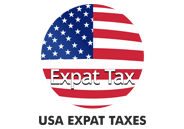Filing US expat taxes from Canada can be challenging for many Americans. American expats residing in Canada are obliged to file US income tax returns every year if they meet the US tax filing requirements and thresholds.
They are required to file tax returns for all the income earned by them all across the globe. Also, they are required to file a Foreign Bank and Financial Accounts Report if they have more than US $ 10,000 in financial accounts outside US at any time during the year.
They are also eligible to claim Foreign Earned income exclusion that can exclude a part of foreign income from US tax. Due the treaties between both Canada and the USA, the expats can claim foreign tax credit on their US return for Canadian taxes they paid, avoiding double taxation.
While filing US expat taxes from Canada, American expats need to file a T1 General tax return annually if they receive income during the year. This return includes common types of income including employment income, investment income and government benefits.
American expats residing in Canada have the responsibility to report their foreign income and assets through various tax forms.
Below table shows the Common tax forms that expats living in Canada need to file are –
| Form 1040 | Report all types of income, deductions and credits |
| Schedule A | Itemize deductions and include medical and dental expenses, taxes paid, interest paid, gifts to charity, thefts losses |
| Schedule B | Report interest and ordinary dividends |
| Schedule C | Report income or loss from business or profession practiced as sole proprietor |
| Schedule D | Report capital gains and losses from sale of assets |
| Schedule E | Reporting supplemental income and loss like partnership income, royalties from real estate |
| Schedule F | Report Farm income profit of loss |
| Schedule SE | Report self-employment tax |
| Form 1116 | Claim Foreign tax credit and avoid double taxation |
Steps to submit US tax filing from Canada
- Prepare tax documents: Gather all the documents including W-2s, 1099s and statements from Canadian banks or financial institutions and proof of any Canadian taxes paid.
- Choose IRS approved E-file provider: Ensure the provider supports the forms you need to file, including Form 1040 and Form 1116 for claiming Foreign tax credit
- Complete the tax return: Input income information, deductions, and credits into software of provider. Also include any income earned in Canada and taxes paid in foreign income section.
- Submit tax return: Once tax return is completed submit it to IRS via e-file provider and get confirmation once it gets accepted.
- Pay owed taxes: Using the IRS direct pay system pay the owed taxes or set up an installment agreement if you are not able to pay in full.
- Keep submission copy: Save the copy of filed tax return and all the related documents for records.
Mailing US tax returns that cannot be e-filed from Canada
- Prepare tax return: Complete tax returns as done for e-filing with all required forms, schedules and documents. Sign and date the return.
- Make copies for records: Keep a copy of all the documents sent to IRS for record
- Address the envelope: IRS has different mailing address for receiving paper tax returns. For all US expats in Canada who are not enclosing payment to IRS, the mailing address is – ‘Department of Treasury, Internal Revenue Service, Austin, TX 73301-0215 USA.
US expat taxes can be complex, and mistakes can lead to huge fines by IRS. It is imperative to consult a tax professional to ensure the correct and timely tax filing throughout.
